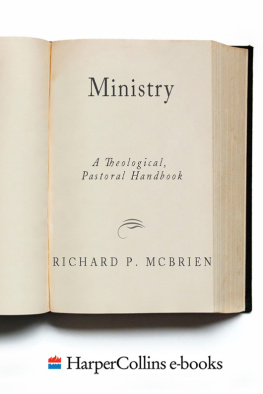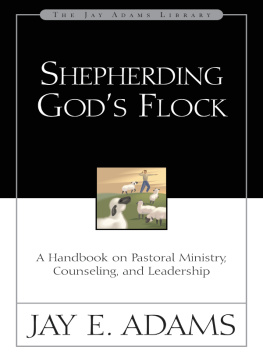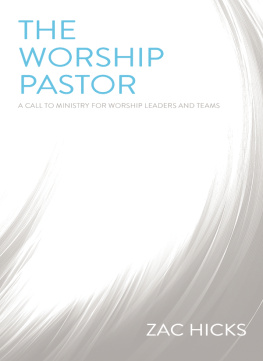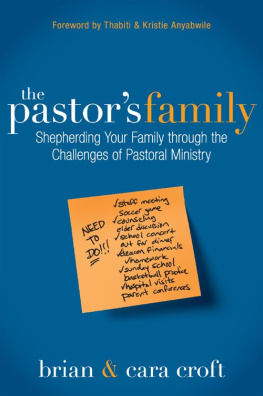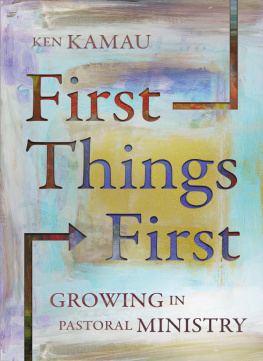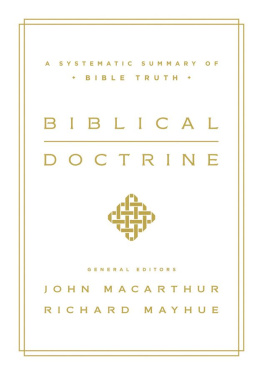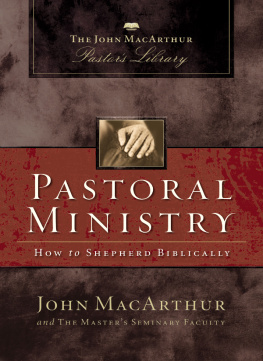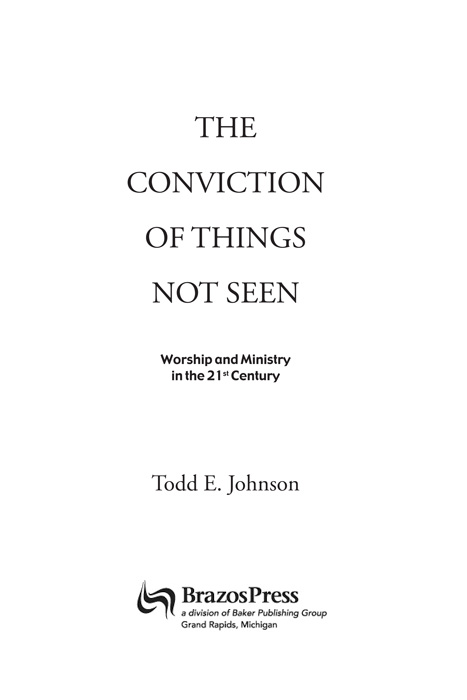
2002 by Todd E. Johnson
Published by Brazos Press
a division of Baker Publishing Group
P.O. Box 6287, Grand Rapids, MI 49516-6287
www.brazospress.com
Ebook edition created 2012
All rights reserved. No part of this publication may be reproduced, stored in a retrieval system, or transmitted in any form or by any meansfor example, electronic, photocopy, recordingwithout the prior written permission of the publisher. The only exception is brief quotations in printed reviews.
eISBN 978-1-4412-1518-5
Library of Congress Cataloging-in-Publication Data is on file at the Library of Congress, Washington, DC.
Scripture is taken from the New Revised Standard Version of the Bible, copyright 1989 by the Division of Christian Education of the National Council of the Churches of Christ in the USA. Used by permission.
To Robert Webber
Amicus Dei,
Amicus Ecclesiae
Now faith is the assurance of things hoped for,
the conviction of things not seen.
Hebrews 11:1
Contents
Foreword
Timothy Weber
Introduction
Todd E. Johnson
1. Merging Tradition and Innovation in the Life of the Church
Constance M. Cherry
2. A Rose by Any Other Name
Lester Ruth
3. Disconnected Rituals
Todd E. Johnson
4. Beyond Style
John D. Witvliet
5. Journeys of Faith
Ruth A. Meyers
6. Ritual and Pastoral Care
William H. Willimon
7. On the Making of Kings and Christians
Rodney Clapp
8. Rich Treasure in Jars of Clay
Mary E. Hess
9. Promises and Problems of a Multiethnic Church
Kathy Black
10. Denominations in the New Century
Gilson A. C. Waldkoenig
11. Visual Christianity
Robert K. Johnston
12. Penetrating the World with the Gospel
Donald G. Bloesch
13. Robert Webber
Dennis Okholm
Foreword
Websters Third New International Dictionary defines festschrift as a miscellaneous volume of writings from several hands for a celebration, especially one of learned essays contributed by students, colleagues, and admirers to honor a scholar on a special anniversary, and so this book isa collection of writings by different people to honor Robert Webber, one of the leaders of worship studies and renewal. As with other festschrifts , this one contains many voices, not just one; it has many themes, but no single plot line. Nevertheless, all the essays do seem to share a common assumption: if it is going to carry out effectively Christs mission in the world, the North American church must think carefully about what it means to minister not only in a new century but also in a new culture. Each essay in its own way invites readers to look at things from a new perspective.
Bob Webber is a man who thrives on new perspectives. I first met him in the late 1970s, not long after Common Roots was published. I was a relatively new assistant professor at Denver Seminary when Bob came to campus to lecture on themes from his book. As often happens to instructors with little seniority, I was assigned to be Bobs go-for during his visit. I picked him up at the airport, drove him between hotel and seminary, and made sure he was where he was supposed to be. I was also responsible for introducing him before his first lecture. I had been provided his bio, so I worked hard to do him justice. After recounting his many degrees and his teaching experience at Covenant and Wheaton colleges, I sat down in the front row and momentarily focused my attention on getting my note-taking materials ready. Suddenly from behind me I heard a gasp from the audience. I looked up to see Bob Webber standing on top of the desk/lectern. Neither I nor anyone else in that audience had expected such acrobatics from a theology professor, but there Bob stood, perched high on the desk looking down at our upturned and incredulous faces. Once he had everyones attention, he made his point: Sometimes you just have to put yourself in another place to see things from a different point of view. (Ten years later I watched Robin Williams pull off a similar stunt as the innovative teacher in the film Dead Poets Society .) Here, clearly, was a theologian who could command and keep ones attention.
Our paths did not cross again for two decades, though it was easy to keep track of Bobs comings and goings in the academic world. Bob wrote a number of books on Christians living in a secular and a highly politicized world, but mostly he followed the theological trajectories in Common Roots: evangelical religion is anything but monolithic, but has been shaped by a rich diversity of traditions, and to be authentic, worship must be rooted in the churchs historic beliefs and practices, no matter where or when it takes place. I watched Bob forge a new trail in worship studies, publishing book after book on the subject. In the process, he became a sought-after guest lecturer and adjunct professor and kept up an exhausting schedule of workshops and conferences.
Bob and I finally reconnected in the late 1990s, after I became dean at Northern Baptist Seminary. When I arrived, I discovered that Bob already had well-developed Northern ties. His Baptist minister father was a Northern graduate, and for almost twenty years, Bob himself had been an adjunct professor at the seminary, teaching occasional courses in early church history, theology, and worship. Then, in the early 1990s, he became the lead professor in Northerns new doctor of ministry in worship degree program.
When the William R. and Geraldyne B. Myers Professor of Ministry chair became available, the seminary did not have far to look for its ideal candidate. Could we induce Bob to come to Northern to direct a new master of arts in worship and spirituality program after he had been so long at Wheaton? In the end the answer was yes.
Bob has been a wonderful addition to Northern Baptist Seminary. He has become a valued colleague, a popular and provocative teacher, and a mentor par excellance . Bobs appointment as an endowed chair came with a reduced teaching load, affording him the time to get some more writing done. Amazing as it seems, Bobs productivity has become even more prodigious since he joined us.
As dean, I am delighted to report that Bob has more than met our expectations. In almost no time, he established himself as an important partner with the rest of us in our ongoing conversation about the kind of future we envision for theological education and for the church at large. It does not take long to find out what Bob believes in and what keeps him up at night. He believes that the renewal of Christian worship must be rooted in serious biblical, theological, and historical study, not the latest fad or the flashiest tricks of technology. He believes that it is possible to survive the worship wars in local congregations with blended worship practices. He is convinced that postmodern people think and experience reality differently than their parents or grandparents did and that ministry and worship must adjust accordingly. He has a deep interest in changing the way we educate future religious leaders so that they can minister effectively in the world as it is and not as it used to be. Most fundamentally, Bob is convinced that the answers to our present and future questions about worship may be found in the churchs past, in what he calls ancient-future faith. He sees in the rising generation a deep longing for worship that moves them toward a transcendent experience of God that is also deeply rooted in corporate experience. It is in the premodern interaction with symbols and creeds and in the new application of the early churchs strategy for bringing pagans into the family of faith through the catechumenate that postmodern people will find their questions answered and their longings satisfied.
Next page

